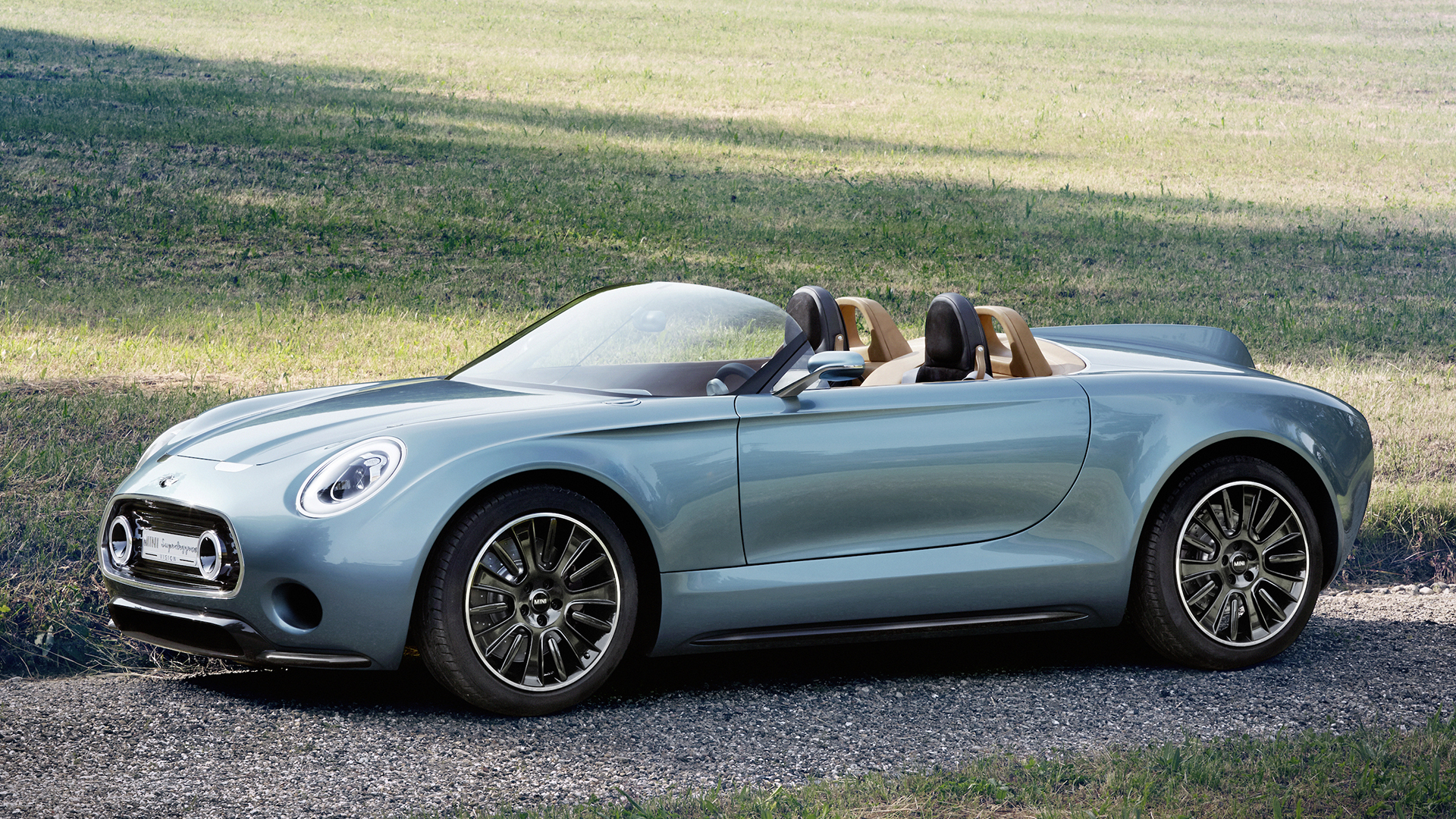

Aside from my annual The Italian Job viewing, I don’t find myself thinking about Mini terribly much. So you’ll excuse me for missing the train on the Mini Superleggera Vision concept car when it first came out a few years back. Did you miss this one, too? Reader, what a thing this could have been!
Unveiled at the 2014 Concorso d’Eleganza Villa d’Este, the Mini Superleggera Vision dared to dream of what a classically modern Mini roadster would have been like. It was a joint project between the British automaker and Touring Superleggera, an Italian coachbuilder that’s known to take its pen and restoration efforts to Alfa Romeos, Lamborghinis, Ferraris, and Maseratis.





Finished in a color called Como Blue, the Superleggera Vision looks as though it was made from liquid sheet metal poured from a prosecco glass. It still wears the distinctive Mini face and pushed-out wheels with small overhangs, but the smooth shape of the doors and the frameless windscreen give it distinctive flying saucer vibes. A raised, central fin runs down the car’s spine and ends at the rear with Union Jack-shaped taillights. These I’m still not 100 percent sold on, but it is a Mini.
Inside, things get even more striking with the dashboard that Mini said was made from a single sheet of exposed aluminum. The door panels feature something that looks like a bundle of sticks held together by a leather wrap and the whole thing is terrifically mini(heh)malist. I also really dig the black-on-tan color scheme. I think an all-tan interior would have been a bit overwhelming, but this walked a good balance.







Looking back on the Mini models we got and have instead of a production version of the Superleggera Vision, I understand why Mini made the decisions that it did. It’s an exclusively small-car brand competing in a big-car market. People want trucks and SUVs; anything small and especially with the word “mini” in its name isn’t doing anyone any favors. All the same, though, a petite roadster definitely fits in the Mini ethos far better than the bigger four-door models that actually came to market. The hardtop four-door, Countryman, and Clubman all feel like they’re chasing someone else’s idea; a bonafide Mini roadster could have forged its own path. Mini could have built it on the existing Z4 platform.
Truthfully, I’m pensive on Mini right now because of Mike Spinelli’s excellent Wheelspin column from this past week: “Mini Can Still Take the States. But Where Does It Go in an SUV World?” Check it out if you haven’t already, but essentially, Spin questions the state of Mini today. The Mini conundrum, which it has always been since the brand returned to United States shores in 2002 under BMW, is how to “sustain the Mini ethos while creeping into profitable, higher-volume segments and putting more models in showrooms … Mini needs to remember that authenticity and personality are assets, not liabilities.”
There’s no doubt that Minis have more personality than nearly any other cars currently being sold. But you can also sense the clear boundaries it’s set down to rein that personality in so as not to alienate too many people and injure sales. The resulting Minis today are handsome cars that drive reasonably well, but also lack the charismatic sucker punch that Minis of yesteryear possessed.

I have no doubt in my mind that had we gotten a production Mini Superleggera Vision, it would have been an immediate money-sink. People don’t really buy roadsters anymore (unless they are the Mazda Miata) and Mini desperately needed to chase real profit returns instead of investing in another model that no one would buy.
Pity, though, because this concept is staggeringly cool.
Got a tip? Holla at me: kristen@thedrive.com